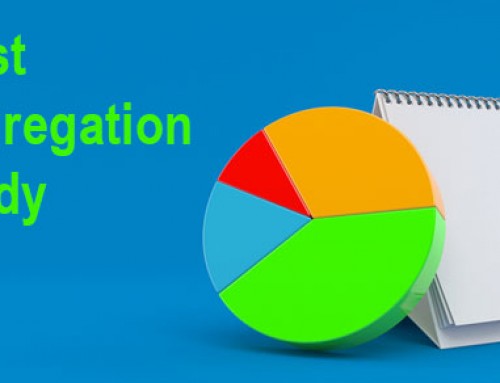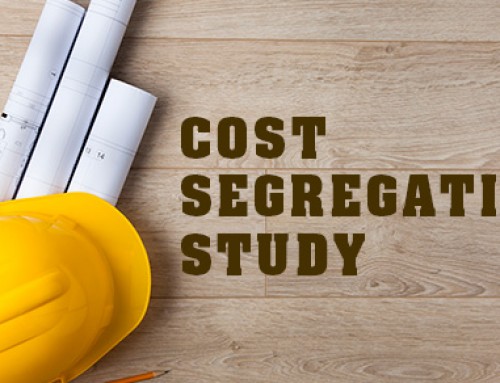As the real estate market continues to rise, property owners are seeing the need to become more educated on ways to reduce their costs. Knowing that real estate is one of the only investments in the United States that can be depreciated (cost recovery), it comes as a no-brainer that property investors are utilizing the benefits of the tax code via cost segregation in order to maximize their cost recovery!
The IRS allows the separation of building components so that items such as land improvements and personal property can be separately depreciated over the shorter recover periods. A property’s structure is generally subject to a 39-year recovery period (non-residential) and 27.5-year for residential, while land improvements qualify for a 15-year recovery period and personal property qualifies for a 5-year recovery period. As a property investor, let’s say you installed new flooring throughout your building. Every year, you can write that flooring off on your taxes until the end of its useful life. That period of time that the asset depreciates is considered the recovery period and the shorter the recovery period, the greater the reduction in tax liability. Typically, a building will yield 25%-35% of the total costs that can be segregated into land improvements and personal property. You can become a savvy real estate investor by simply understanding this concept and how it can be used for future investments or repairs and maintenance on current investments. While this process can significantly decrease a property owner’s income tax liability, it is important to know when a cost segregation study makes sense.
6 Key Factors When Considering A Cost Segregation Study:
- Is it an investment property?
All properties can benefit from a Cost Segregation Study as long as they are investment properties, the only properties subject to depreciation. The exclusion would be permanent residence or properties that are owned and do not depreciate because of the ownership structure.
- Is there opportunity for bonus depreciation?
A common misconception is that real estate properties under $1M have a smaller tax basis and would not benefit from cost segregation, believing the fees would outweigh the benefit. However, that is not always the case. Properties ranging from $500k and under to $50M or more have benefited from cost segregation. Reason being, the smaller properties can benefit because of bonus depreciation (note: “original user” rules apply). Bonus depreciation allows taxpayers to calculate and deduct 50 percent of qualifying property costs in the first year in addition to regular depreciation for new construction and improvements.
For example, a cost segregation study that classified 200k dollars of a newly constructed 500k property into personal property would allow for a $100k bonus depreciation benefit in the first year alone. Additionally, the study would identify the opportunity to capture added benefits such as dispositions and repairs and maintenance expenditures. This would increase the benefit to where the fee would not be so outrageous that it would hinder the investment.
- Have tenant improvements been made?
The same circumstances apply even in a small tenant improvement by utilizing bonus depreciation for new assets. There is quite a bit that can be written off in these instances to validate the benefit from the study. At the very least, everyone should look at his or hers investment to see if it would be beneficial, no matter what the size. A preliminary analysis can estimate what the benefit would be vs. the fee to ensure a study makes sense.
- Are there personal property and/or land improvements?
Another misconception surrounds properties that do not have a lot of personal property in them such as industrial warehouses. There is still benefit there because those properties generally have a lot of land improvements that qualify. They may also have certain portions of electrical, mechanical, and plumbing that can also qualify. This kind of study can pay greatly in the first year but the ability to identify dispositions, repairs and maintenance, and also minimize recapture through the proper retirement of assets are just as valuable.
Recapture and cost segregation: Upon the sale of a business property, accelerated tax benefits identified through cost segregation are disposed of at net tax book value. Subsequently, there are neither gains nor losses associated with the disposal of these corresponding assets and all gains on the sale of the associated structure and land will be taxed at a preferential capital rate.
- Is there opportunity to take deductions at ordinary tax rates?
If a property is purchased with the intention to flip it or own it for a short period of time (less than a year), a cost segregation study may not be meaningful. However, many people in the industry feel that if you don’t own an investment property for even 1-3 years, that it doesn’t warrant a cost segregation study. This is not always the case and it may still make sense in order to identify the opportunity to take deductions at ordinary tax rates. Depending what the tax rate is, an engineering analysis can determine what the estimated benefit is during the time the property was held and how that impacts recapture and the opportunity to lower the tax position through long-term gains vs. ordinary income tax.
- Has the property been recently sold?
If a property has already been sold it may still be a good candidate for cost segregation. As long as you sold the building and haven’t filed the tax return, there is an opportunity to do a cost segregation and begin maximizing tax deductions at ordinary tax rates. Although the study may increase the gain, the gain may be at a much lower rate making it a beneficial investment.
In essence, if there is an investment property that is held for a year or more, a cost segregation study should be considered. In addition to the depreciation deductions, a cost segregation study will aid in capturing future benefits of dispositions, repairs, routine maintenance and overall asset management. The tax savings are significant and can also be reinvested into the property and can be seen as net present value. To make the investment that much sweeter, the engineering fees surrounding cost segregation are tax deductible!
Written by Engineered Tax Services. Contact ETS here for more information.







Leave A Comment